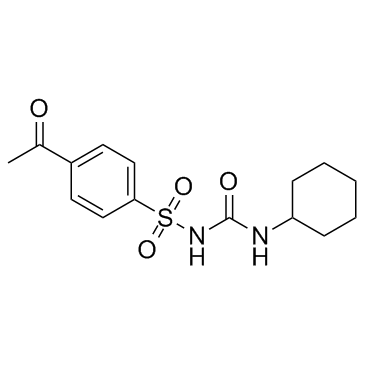Cadmium exposure decreases androgen-dependent metabolism of acetohexamide in liver microsomes of male rats through its testicular toxicity.
Hideaki Shimada, Shizuka Yamaguchi, Hideyuki Murata, Masaki Otagiri, Yorishige Imamura
Index: Arch. Toxicol. 76(1) , 8-12, (2002)
Full Text: HTML
Abstract
Administration of cadmium (Cd) at a dose of 1.23 mg/kg (2.0 mg/kg as CdCl(2)) markedly decreased the activity of an enzyme (acetohexamide reductase) catalysing the ketone-reduction of acetohexamide, an oral antidiabetic drug, in liver microsomes of male rats. However, the decreased enzyme activity was increased by repeated treatment with testosterone propionate (TP). When male rats were castrated and TP was given to the castrated ones, a similar decrease and increase, as described above, were observed in the microsomal enzyme activity. Cd exposure to male rats induced haemorrhage and atrophy of the testes and significantly diminished serum testosterone levels. There was no possibility that Cd accumulated in liver microsomes of male rats causing direct inhibition of the microsomal enzyme activity. We conclude that Cd exposure decreases androgen-dependent metabolism of acetohexamide in liver microsomes of male rats through its testicular toxicity. Cd exposure had no effect on acetohexamide reductase activity in liver cytosol of male rats.
Related Compounds
| Structure | Name/CAS No. | Molecular Formula | Articles |
|---|---|---|---|
 |
Acetohexamide
CAS:968-81-0 |
C15H20N2O4S |
|
Therapeutic targeting of BRCA1-mutated breast cancers with a...
2014-11-01 [Cancer Res. 74(21) , 6205-15, (2014)] |
|
Analysis of free drug fractions by ultrafast affinity extrac...
2014-12-05 [J. Chromatogr. A. 1371 , 82-9, (2014)] |
|
CURRENT THERAPEUTICS. CCII. ACETOHEXAMIDE.
1964-10-01 [Practitioner 193 , 555-60, (1964)] |
|
In vitro inhibition of breast cancer spheroid-induced lymphe...
2013-02-19 [Br. J. Cancer 108(3) , 570-8, (2013)] |
|
Catalytic properties of carbonyl reductase from rabbit liver...
1994-08-01 [Biochem. Mol. Biol. Int. 33(5) , 893-9, (1994)] |